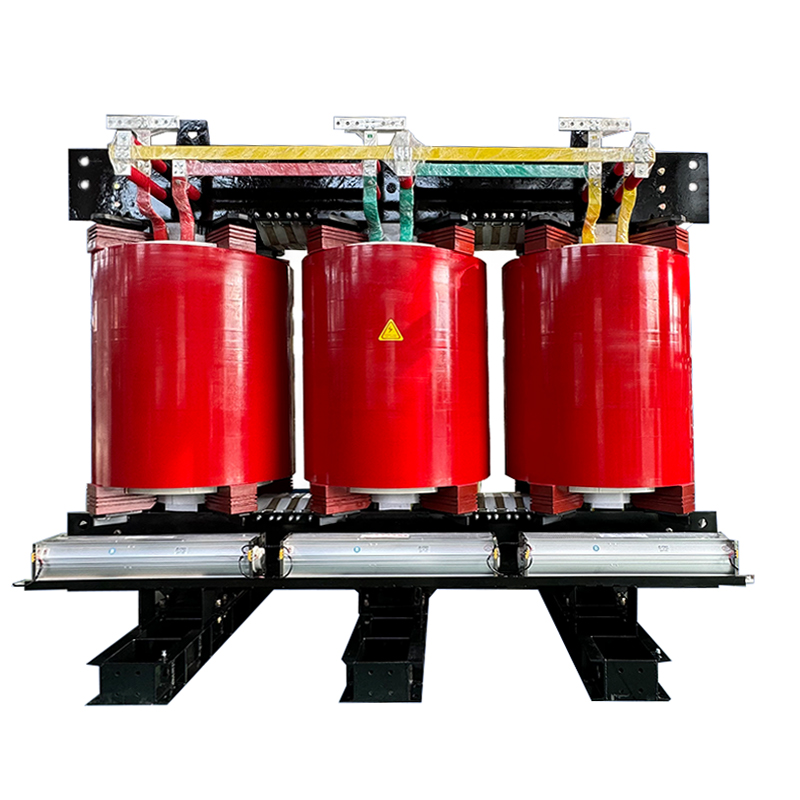Energy-Saving Single-Phase Oil-Immersed Pole-Mounted Transformer
15KVA 13.8KV/0.4KV
See DetailsWhen installing a 35kV dry-type power transformer, ensuring optimal cooling and ventilation is crucial to maintaining its efficiency, longevity, and safe operation. Unlike oil-immersed transformers, which rely on oil for both insulation and cooling, dry-type transformers depend on air cooling and resin insulation to achieve these functions. This shift in design requires careful attention to the installation environment, as proper cooling and ventilation directly impact the transformer's performance and reliability.

The first step in ensuring proper cooling is selecting an appropriate installation location. Ideally, the transformer should be installed in an environment with adequate airflow, free from obstructions that could impede natural air circulation. Since dry-type transformers use air as the primary cooling medium, placing the transformer in an area with consistent airflow is essential. This may include installing the unit in well-ventilated rooms, outdoor enclosures, or dedicated transformer rooms that meet local environmental conditions. Avoiding areas with high ambient temperatures or humidity levels is equally important, as extreme conditions can reduce the effectiveness of air cooling and lead to overheating.
Once the location is chosen, the next critical step is to consider the physical space around the transformer. There should be a minimum clearance around the transformer to allow for unimpeded airflow, which is necessary for efficient cooling. According to industry standards, a clear space of at least 10-15 cm on all sides of the transformer is recommended. This space ensures that the heat generated during operation can dissipate effectively and that air can circulate freely. For larger transformers, additional clearance might be needed to accommodate maintenance access and ensure that any airflow is not obstructed by nearby walls, equipment, or other structures.
The installation of the transformer should also consider its positioning in relation to other electrical equipment. Heat buildup can be a concern if transformers are clustered too closely together. While dry-type transformers tend to have lower heat dissipation issues compared to oil-immersed models, they still generate significant amounts of heat that need to be managed. Ensuring that transformers are spaced adequately from other equipment can help maintain an optimal cooling environment and reduce the risk of heat accumulation that might lead to failures or reduced efficiency.
In addition to adequate space and location, the temperature within the transformer’s operating environment plays a vital role in cooling efficiency. Installing the transformer in a temperature-controlled space is ideal, but if that’s not possible, ensuring proper ventilation becomes even more critical. Air conditioning systems or forced ventilation fans can be used to regulate temperature and prevent overheating. The ambient temperature should be kept within the manufacturer's recommended range, typically between 0°C to 40°C, to avoid compromising the transformer’s insulation or cooling capacity. In extremely hot climates, extra measures such as cooling units or fans can be used to maintain stable operating conditions.
Furthermore, the installation should account for the resin insulation’s behavior under different conditions. Resin insulation is designed to handle high temperatures, but excessive heat can still degrade its performance over time. As such, it's important that the cooling system works effectively to keep the temperature within the optimal range to ensure the longevity of both the resin and the transformer’s overall integrity. Regular monitoring of the temperature inside the 35kV dry-type power transformer, using sensors or thermographic inspections, can help detect early signs of overheating before they lead to a failure.
Beyond just ensuring proper ventilation, the choice of installation materials and construction is also important. The transformer should ideally be installed in a dust-free and clean environment to prevent debris from entering the cooling vents or settling on the transformer itself. Accumulated dirt can obstruct airflow and increase the risk of overheating. It's also advisable to install the transformer on a stable, level foundation that minimizes vibration, as excessive movement can cause mechanical stress on the components and impact the transformer’s cooling system.
Lastly, routine maintenance is a key component of sustaining optimal cooling conditions. While the dry-type transformer is relatively low-maintenance compared to oil-immersed types, keeping the ventilation system and cooling paths free of obstructions is essential for maintaining performance. Periodic inspections of the resin insulation, cooling fans, and overall condition of the ventilation system are recommended. Ensuring that the transformer is clean and that airways remain unobstructed will help maintain cooling efficiency throughout the lifespan of the unit.
Contact Us